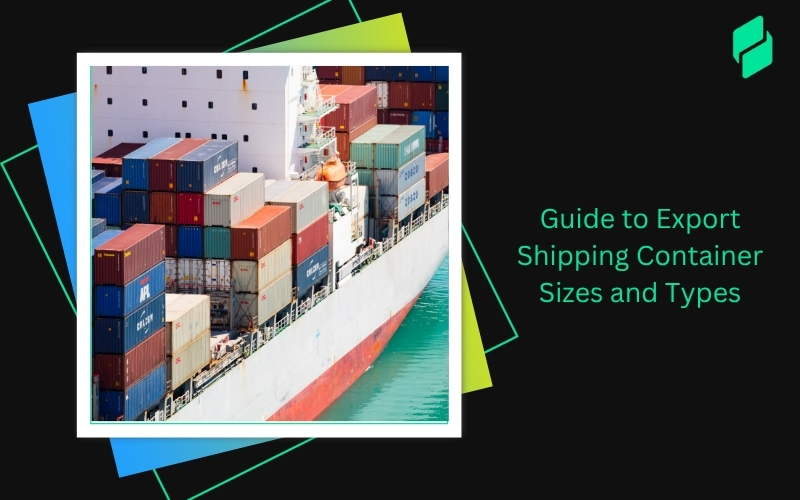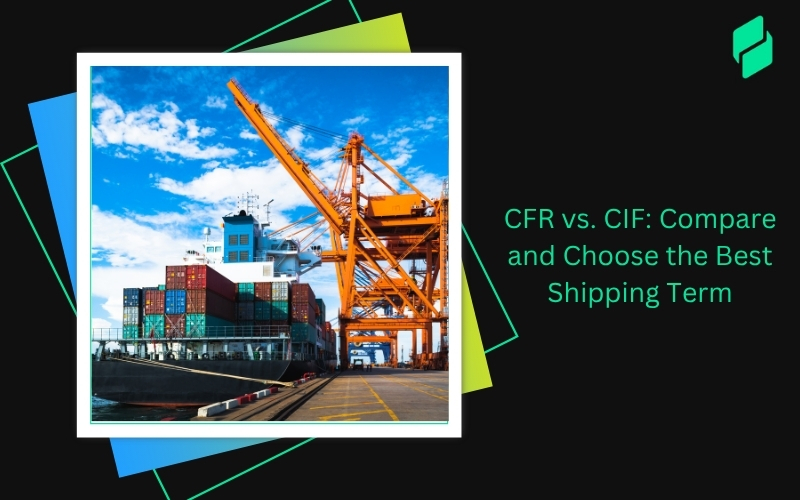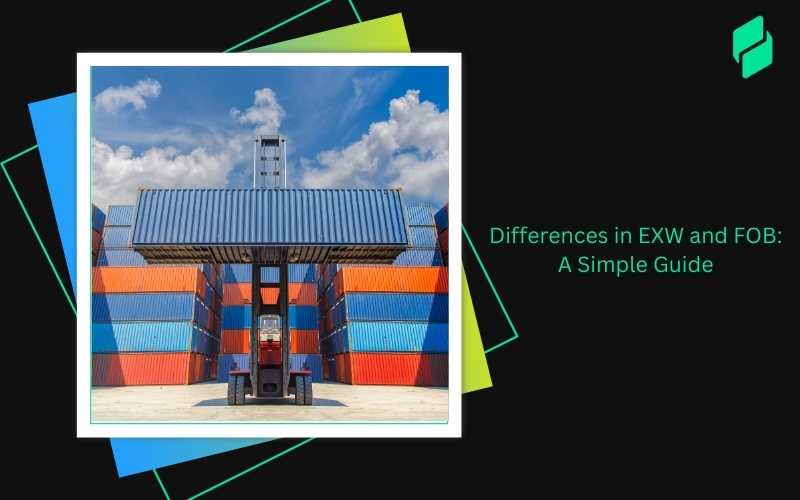Optimize your business: use unlimited savings with Pazago fulfilled now!
Get Started ->Sending off a shipment without a pre-shipment inspection is like crossing a busy intersection blindfolded. Risky, unpredictable, and likely to cost you. And you understand that quality and compliance are non-negotiable in today's global trade.
With the Global Pre-shipment inspection market projected to reach around USD 21.8 billion by 2032, growing at a CAGR of 6.2% from 2023 to 2032, businesses are clearly recognising this step’s critical importance.
But understanding the pre-shipment inspection cost—what goes into it, what influences it, and how to optimise it—can give you a competitive edge.
This article explains everything you need to know about managing these costs, from key factors to common mistakes, and how platforms like Pazago make the entire process seamless.
Dive in!
What is Pre-Shipment Inspection?
Pre-shipment inspection (PSI) is a process you use to ensure your products meet all the agreed-upon quality and compliance standards before they’re shipped to your buyer. This includes verifying that the goods match the FOB (Free on Board) value and all contract specifications.
By doing this inspection, you can verify that the items you’re sending match the specifications, quantities, and packaging requirements you've set with your supplier.
Typically, a third-party inspector will check everything for you, ensuring that defective or non-compliant goods aren’t in your buyer’s hands.
Why is Pre-Shipment Inspection Necessary?
Pre-shipment inspection is crucial for any business involved in international trade. Before you understand pre-shipment inspection cost, read on to know why it’s necessary.
- Quality Assurance: Ensures products meet the agreed-upon specifications and standards.
- Prevents Financial Losses: Identifies defects or non-compliance before shipping, avoiding costly returns or disputes.
- Regulatory Compliance: Verifies that your goods meet international standards and local regulations.
- Customer Satisfaction: Reduces the risk of defective goods reaching your customers, maintaining your business reputation.
- Avoids Delays: Catches issues early, ensuring timely deliveries by avoiding rework or replacements.
Also Read: Role and Benefits of Pre-Shipment Inspection in Industrial Services.
What is the Pre-Shipment Inspection Cost?

The pre-shipment inspection cost varies depending on the country, agency, and complexity of the inspection.
Here’s a closer look at how these pre-shipment inspection costs are typically structured, using India as an example.
One of the leading inspection agencies, SGS India, charges approximately 0.56% of the FOB value of the shipment, with a minimum fee of USD 350, plus applicable service taxes.
However, SGS India often follows a rigid pricing structure and may not provide the level of customisation your business needs.
Platforms like Pazago, on the other hand, offer tailored solutions with more flexible pricing. This allows you to adjust the service according to your specific shipment needs, something most companies typically do not offer.
Factors Influencing Pre-Shipment Inspection Cost
With India’s exports projected to reach $776.68 billion in the fiscal year 2023–2024, the stakes for ensuring product quality before shipment have never been higher. For businesses like yours, understanding the pre-shipment inspection cost is critical to maintaining the quality and reputation of your goods in this massive market.
As imports also soar to an estimated $675.44 billion, managing inspection costs becomes essential to stay competitive and compliant.
Check out the key factors influencing pre-shipment inspection cost.
1. Type of Inspection
The type of inspection your business requires can significantly impact the overall pre-shipment inspection cost. Inspections vary in complexity, as given below.
For instance, if your product requires specific safety certifications, such as CE marking for European exports, the pre-shipment inspection cost will rise accordingly to ensure compliance with these standards.
2. Product Complexity and Category
The complexity of the product plays a huge role in determining the pre-shipment inspection cost. Simple items, like textiles, typically involve straightforward inspections, while more complex products—such as electronics or machinery—require detailed checks to ensure functionality and safety.
For example, electronic devices might require a functional test to check performance, which adds to the overall pre-shipment inspection cost. Additionally, industries like pharmaceuticals or food often require specialised tests, such as chemical composition analysis, further increasing inspection fees.
3. Geographical Location
The location of the inspection affects the total cost as well. Inspections conducted in countries with higher labour costs, such as Europe or the U.S., tend to be more expensive than those in regions like Southeast Asia or Africa.
Additionally, if the inspection site is in a remote or hard-to-reach area, travel expenses for the inspectors can add up, pushing the total cost higher.
For instance, inspections in India might be more cost-effective than those in Western countries, but remote locations within the country could increase the cost due to additional travel fees.
4. Volume of Goods Inspected
The more goods you need to inspect, the higher the cost. However, large volumes can often lead to discounts per unit inspected.
Most third-party inspection companies offer bulk pricing when dealing with significant quantities. If you’re shipping a large batch of products, it’s worth negotiating rates based on volume to lower your overall costs.
For example, inspecting a shipment of 10,000 units might cost you less per unit than inspecting a smaller batch of 1,000 units, as inspectors can apply economies of scale.
5. Inspector Expertise and Inspection Agency
The level of expertise required from inspectors also influences the price. If you need a specialised inspector with experience in a particular industry, expect higher costs. Moreover, the inspection agency you choose, a government body or a private third-party service, can affect your expenses.
Private agencies often provide quicker turnaround times but at a higher cost than government bodies.
It’s also important to ensure the inspection agency has global accreditation, such as ISO 17020 for inspection services, to guarantee that your goods meet international standards.
Also Read: Procedure and Steps in Pre-Shipment Inspection and Quality Control.
6. Urgency of the Inspection
Rushed inspections or last-minute requests generally come with a premium.
If you need an inspection completed quickly to meet a shipping deadline, expect to pay more for expedited services. Planning ahead and scheduling your inspections early can help you avoid these additional fees.
For example, if your shipment date is in two weeks and you schedule an inspection now, the cost will be lower than if you request an inspection just a few days before shipping.
7. Additional Testing or Certification Requirements
If your products require extra tests, certifications, or documentation beyond a standard pre-shipment inspection, your costs will increase.
For instance, goods entering certain markets may need certification to comply with ISO standards or specific chemical tests to meet European REACH regulations.
Each additional test, certification, or compliance requirement adds to the overall price, as specialised labs or agencies often conduct these.
8. Travel and Logistics Costs
If the inspection team needs to travel long distances or to remote locations, travel expenses such as flights, accommodation, and meals can significantly increase the overall cost of the inspection. Many inspection agencies pass these costs directly to the client.
Choosing a local inspection agency or inspector can help you save on these logistical costs, especially if your product is manufactured in multiple locations across different countries.
Countries That You to Pay Pre-Shipment Inspection Cost
Around 40 countries globally require you to conduct and pay the pre-shipment inspection cost. This is for importing products that exceed a certain invoice amount or belong to specific categories.
The following countries currently require or request pre-shipment inspections.
- Angola
- Bangladesh
- Benin
- Burkina Faso
- Burundi
- Cambodia
- Cameroon
- Central African Republic
- Comoros
- Republic of Congo (Brazzaville)
- Democratic Republic of Congo (Kinshasa)
- Cote d'Ivoire
- Ecuador
- Ethiopia
- Guinea
- India
- Indonesia
- Iran
- Kenya
- Kuwait
- Liberia
- Madagascar
- Malawi
- Mali
- Mauritania
- Mexico (see note below)
- Mozambique
- Niger
- Senegal
- Sierra Leone
- Togo
- Uzbekistan
These inspections ensure the goods meet the necessary quality, quantity, and compliance standards before shipping.
The majority of countries with pre-shipment inspection requirements are located in Africa. Nations like Benin, Burkina Faso, Burundi, and others mandate that imported goods be inspected and accompanied by a pre-shipment inspection certificate.
Several Asian countries, such as Cambodia and Iran, enforce pre-shipment inspection, where the certificates are necessary to ensure compliance.
It’s also important to note that some countries have removed their mandatory PSI requirements. For instance, Angola in Africa and Bangladesh in Asia have not required pre-shipment inspection since 2013.
Understanding the pre-shipment inspection cost and knowing which countries require certification can help you prepare for international trade and avoid delays.
How to Minimize Pre-Shipment Inspection Costs?

With Indian ports handling more than 1.4 billion metric tons of cargo in fiscal year 2023, the demand for efficient and cost-effective shipping solutions is at an all-time high.
As a business leader, finding ways to minimise these costs without compromising on quality or compliance is essential. By implementing strategic measures, you can reduce your pre-shipment inspection expenses and enhance your overall operational efficiency.
Learn how to save significantly while ensuring your shipments meet the highest standards.
1. Understand Your Inspection Requirements
Before engaging in PSI, you must know your product's and destination's specific requirements. Regulations vary by country and product type, so understanding these can prevent unnecessary inspections. Consult with customs experts to align your processes with local laws.
2. Choose the Right Inspection Partner
Selecting an experienced inspection company can lead to substantial cost savings. Evaluate potential partners based on their expertise, reputation, and pricing structure. A partner with a robust local presence can often reduce logistical costs and provide more accurate inspections.
3. Consolidate Shipments
If possible, combine shipments to reduce the frequency of inspections. By consolidating orders, you can spread the inspection costs across multiple products, lowering the average cost per shipment. This approach not only saves money but can also streamline logistics.
4. Optimise Production Scheduling
Work closely with suppliers to ensure that products are ready for inspection before shipment. Efficient production scheduling minimises delays and reduces the likelihood of additional inspections, thus lowering costs.
5. Implement Quality Control Measures
Investing in quality control during manufacturing can reduce the chances of defects, leading to fewer inspections. Train suppliers on quality standards to ensure compliance before the PSI, resulting in fewer issues that could trigger costly re-inspections.
6. Use Technology for Inspection Management
Adopting technology can streamline the inspection process. Use software to track shipments, manage documentation, and communicate with inspection teams. Efficient management can cut down on time and costs associated with PSI.
7. Negotiate Inspection Fees
Don’t hesitate to negotiate fees with your inspection provider. Many companies are open to discussing pricing, especially if you plan to engage them for multiple shipments. Building a long-term relationship can lead to better rates over time.
8. Plan for Seasonal Demand
If your shipments align with peak seasons, you might face higher inspection costs due to increased demand. Planning shipments ahead of time can help avoid these surges. Consider scheduling inspections during off-peak times when costs may be lower.
Adjusting Inspection Levels for Optimal Cost Management
When managing your pre-shipment inspection cost, understanding inspection levels is crucial. The AQL (Acceptable Quality Level) designates the number of inspections in different scenarios.
ISO 2859-1 specifies three general inspection levels—Level I, Level II, and Level III—and four special levels (S-1, S-2, S-3, and S-4). Typically, Level II is the default choice.
However, if your supplier has a strong quality record, consider using Level I to save on inspection costs and time. Conversely, if they’ve faced recent quality issues, switch to Level III to inspect a larger sample size for added assurance.
These adjustments help manage pre-shipment inspection costs and ensure product quality. Refer to the AQL chart below to determine the appropriate inspection level and sample sizes for your needs.

Source: Fami Sourcing
Common Mistakes to Avoid During Pre-Shipment Inspection
Pre-shipment inspections are crucial for maintaining quality and compliance in international trade. However, certain pitfalls can lead to increased costs and delays.
Here are some common mistakes to avoid while you prepare to pay the pre-shipment inspection cost.
1. Lack of Clear Communication
One of the most significant mistakes is communicating effectively with suppliers and inspection teams. Ensure everyone is on the same page regarding quality standards, timelines, and specific inspection criteria. Clear communication can help prevent misunderstandings and costly errors.
2. Ignoring Pre-Inspection Quality Checks
Skipping pre-inspection quality checks at the manufacturing site can lead to surprises during the PSI. Conducting your own quality assurance measures beforehand allows you to identify and address issues before the formal inspection, saving time and money.
3. Underestimating Inspection Timing
Many businesses underestimate the time required for pre-shipment inspections. Rushing the process can lead to oversights and errors. Plan your timeline carefully, allowing ample time for the inspection and any necessary follow-ups.
4. Choosing the Wrong Inspection Provider
Selecting an inexperienced or unreliable inspection provider can lead to significant issues. Do your research and choose a provider with a solid track record and expertise in your product category. This decision can impact the quality and efficiency of the inspection process.
5. Neglecting Documentation
Inadequate documentation can result in delays or even failed inspections. Ensure all necessary paperwork, including quality certificates, invoices, and packing lists, are complete and readily available. Proper documentation facilitates smoother inspections and compliance with regulations.
6. Failing to Set Realistic Expectations
Expecting perfection from every shipment can lead to frustration and increased costs. Set realistic expectations for quality and allow for minor imperfections, as long as they don’t compromise the overall product integrity. Understanding the acceptable tolerance levels can help you avoid unnecessary rejections.
7. Not Involving All Stakeholders
Neglecting to involve all relevant stakeholders in the inspection process can lead to gaps in understanding and execution. To ensure a cohesive approach, include procurement, quality assurance, and logistics teams in discussions about inspection requirements and results.
8. Ignoring Regulatory Changes
Regulations governing imports and exports can change frequently. Failing to stay updated on these changes can result in non-compliance and additional costs. Regularly review and stay informed about the regulations relevant to your industry and destination.
Choosing the Right Pre-Shipment Inspection Provider: Pazago
Selecting a pre-shipment inspection provider can significantly impact your business operations. Pazago is a fully managed platform designed to empower businesses like yours in the import-export trade and help you expand globally faster.

It helps cut costs by 20% while reducing turnaround time by 50%. These savings can be reinvested in other areas, improving overall performance and competitiveness in a fast-paced marketplace.
Why Choose Pazago for Your Pre-Shipment Inspection?
- Efficient Purchase Orders: Eliminate paperwork and centralise information to handle purchase orders faster and more efficiently.
- Reliable Quality Inspections: For every product through a network of thousands of inspectors, covering raw material inspections, inventory audits, pre-shipment and in-line inspections, and container loading checks.
- Customs Clearance: Experience seamless regulations navigation with accurate paperwork and timely processing.
- Proactive Risk Management: Identify potential risks and bottlenecks, such as supplier delays, and address them proactively.
- Streamlined Communication: Use Pazago's Inbox to coordinate with all key parties, bringing clarity and efficiency to trade discussions.
- Centralised Document Management: Organize and collaborate on critical trade documents, keeping everything secure and easily accessible.
- Cargo Tracking Made Easy: Track shipments in real-time using just the BL number, bypassing multiple shipping sites and ensuring timely updates.
- Ocean Shipping: Choose between FCL or door-to-door shipping for timely and safe delivery, backed by partnerships with trusted carriers.
- Global Scaling: Track shipments from over 180+ shipping companies in 110+ countries without switching websites.
- Effortless International Payments: Collect payments with priority clearance at the lowest Forex rates and receive foreign currency payments in as little as 3 hours.
- Insurance: Secure your shipments with safe cargo insurance from ICICI Lombard, featuring fully digital processes, no unnecessary paperwork, and seamless claims.
Conclusion
In conclusion, this article has equipped you with valuable insights into managing pre-shipment inspection costs, understanding their importance for quality assurance, and identifying common pitfalls to avoid.
You’ve learned how to optimise costs through strategic planning and the benefits of choosing a reliable partner like Pazago.
Now is the time to elevate your import-export operations. Explore Pazago’s innovative solutions today and streamline your trade processes for greater efficiency and savings!
Also Read: Role and Necessity of Pre-Shipment Inspection for Export Firms.


.png)








